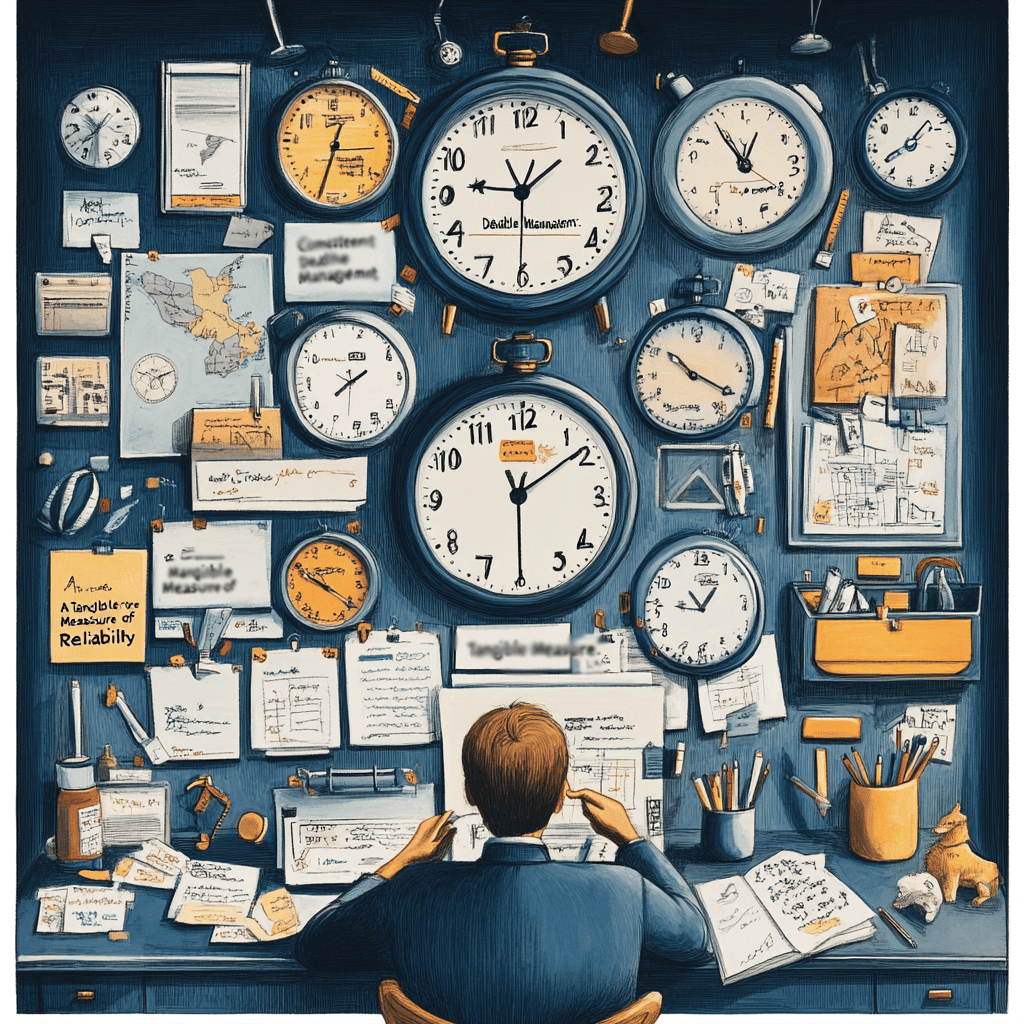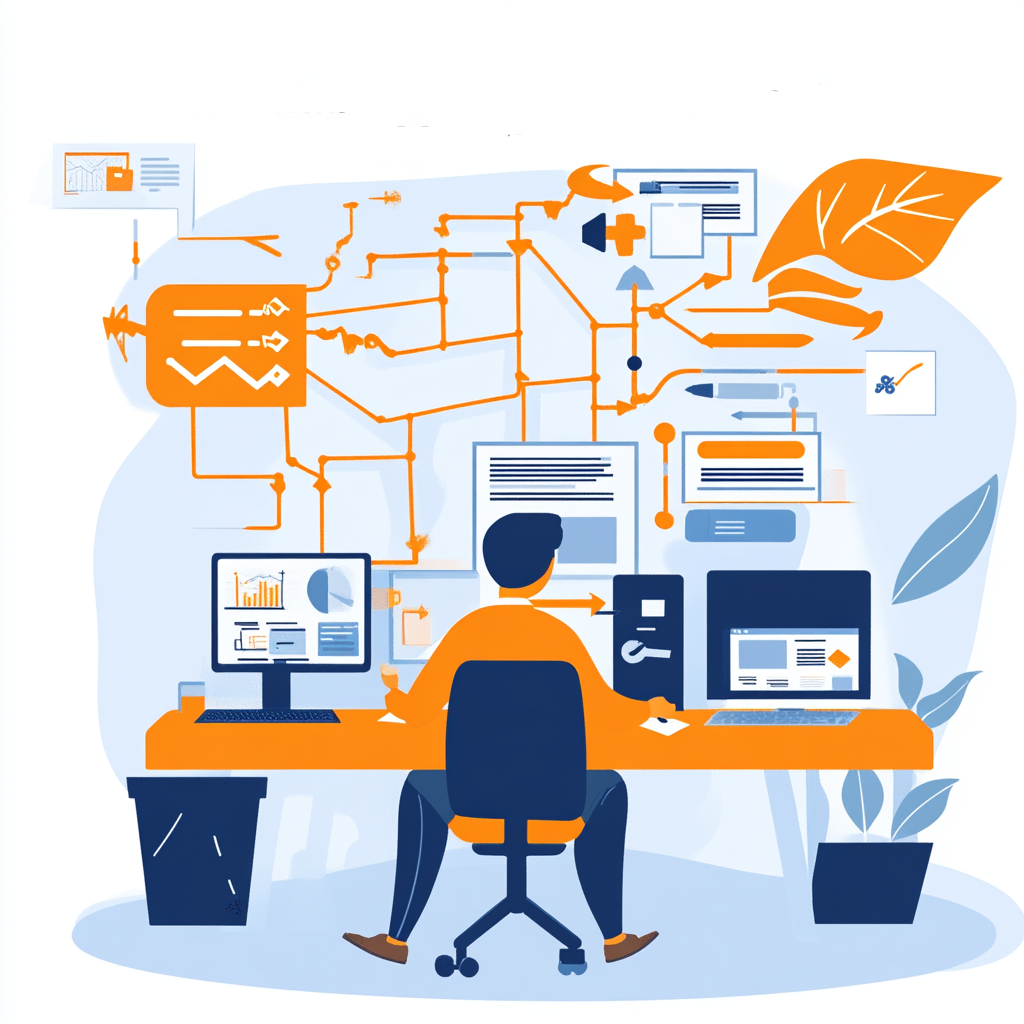In the competitive world of B2B (business-to-business) relationships, where projects can be complex and timelines can make or break outcomes, trust is paramount. But trust isn’t built overnight; it’s a long game of consistently demonstrating reliability, transparency, and commitment to your partner’s success. One powerful, often underappreciated way to build and maintain trust is through punctuality. Delivering on time, meeting deadlines, and respecting schedules are all part of a larger strategy that can set you apart in any industry. Here’s how punctuality can become your competitive advantage in B2B projects, helping you build and sustain the high level of trust that keeps clients coming back.
In B2B projects, clients often depend on you to meet deadlines as part of a larger business ecosystem. Your timelines impact their timelines; if you miss a deadline, it can have ripple effects across their operations, from delaying product launches to slowing down supply chains. By consistently delivering on time, you minimize risk, reduce client stress, and stand out as a reliable partner. Punctuality shows your respect for the client’s goals and resources, which builds a foundation of trust and credibility.
Consistent Deadline Management: A Tangible Measure of Reliability
 In B2B projects, meeting deadlines is a key measure of success. Your client relies on your timeline to inform their own operations, often aligning other dependencies with your delivery schedule. Here’s how punctuality in managing deadlines becomes a powerful way to build trust:
In B2B projects, meeting deadlines is a key measure of success. Your client relies on your timeline to inform their own operations, often aligning other dependencies with your delivery schedule. Here’s how punctuality in managing deadlines becomes a powerful way to build trust:
– Setting Realistic Timelines: Ensuring punctuality starts with being honest and precise about timelines. This means accurately estimating timeframes during initial project planning, including buffer times for potential challenges. By setting achievable deadlines and hitting them, you show clients that you understand the demands of the project and have the skills to meet them.
– Minimizing Uncertainty: When clients see you meet deadlines consistently, they come to rely on you as a stable and predictable partner. This reliability minimizes their operational uncertainty, creating a mutually beneficial working environment.
– Establishing Trust as a Pattern: With every deadline met, you’re building a track record. Clients often prefer a predictable partner they can trust, even over a more innovative solution that doesn’t prioritize punctuality.
| Key Aspect | Description | Client Benefit |
| Setting Realistic Timelines |
|
|
| Minimizing Uncertainty |
|
|
| Establishing Trust as a Pattern |
|
|
The Role of Communication: Frequent, Timely Updates Build Confidence
 Communication is central to managing expectations and ensuring trust. It’s not just about meeting the final deadline; it’s about showing your commitment to the timeline every step of the way. Punctual communication sets the stage for a well-organized project.
Communication is central to managing expectations and ensuring trust. It’s not just about meeting the final deadline; it’s about showing your commitment to the timeline every step of the way. Punctual communication sets the stage for a well-organized project.
– Setting Clear Milestones: Divide large projects into manageable milestones and communicate the timeline for each one. Providing regular, on-schedule updates reinforces your punctuality and gives clients assurance of progress.
– Proactive Updates: Updating clients on milestones shows that you’re organized, proactive, and transparent about the project’s status. If any issues arise, informing clients early allows them to make adjustments if needed, maintaining trust in your ability to meet their expectations.
– Response Time as a Trust Indicator: Prompt responses to client queries signal respect and readiness to address their concerns. This responsiveness demonstrates that you value their time and can handle their needs in a timely, professional manner.
| Communication Aspect | Description | Client Benefit |
| Setting Clear Milestones |
|
|
| Proactive Updates |
|
|
| Response Time as a Trust Indicator |
|
|
Structured Project Management: Creating Predictable, Punctual Workflows
 One of the main ways to embed punctuality into your projects is by setting up structured project management processes. With a clear process, your team can manage resources effectively, avoid last-minute rushes, and consistently deliver on time.
One of the main ways to embed punctuality into your projects is by setting up structured project management processes. With a clear process, your team can manage resources effectively, avoid last-minute rushes, and consistently deliver on time.
– Creating a Timeline for Each Project Phase: Rather than focusing only on the final deadline, break down the project into specific phases, each with its own timeline and objectives. By working on smaller, achievable deadlines, the team stays on track, and clients get regular feedback on progress.
– Efficient Resource Allocation: By understanding the resource needs for each phase of a project, you can ensure that the right people and tools are available at the right time, which reduces the likelihood of delays and demonstrates strong organizational skills.
– Documented Workflow: A documented workflow not only ensures that your team stays on task, but it also communicates to the client that you have a well-thought-out approach. Clients are more likely to trust a provider with structured processes because they associate this with professionalism and reliability.
| Project Management Strategy | Description | Client Benefit |
| Timeline for Each Project Phase |
|
|
| Efficient Resource Allocation |
|
|
| Documented Workflow |
|
|
Embracing Digital Tools: Leveraging Technology to Enhance Timeliness
 Technology can play a pivotal role in improving punctuality and providing transparency in B2B projects. By adopting digital tools for project management, time tracking, and communication, you can optimize the entire project timeline.
Technology can play a pivotal role in improving punctuality and providing transparency in B2B projects. By adopting digital tools for project management, time tracking, and communication, you can optimize the entire project timeline.
– Project Management Platforms: Using tools like Asana, Trello, or Monday.com can streamline project timelines by clearly mapping tasks, responsibilities, and deadlines. Clients can be invited to view timelines and progress directly, adding a layer of accountability.
– Automated Reminders and Notifications: Automated reminders for task deadlines help keep everyone on track. Many project management tools also offer notifications for clients, ensuring they’re always aware of progress or any upcoming milestones.
– Time Tracking for Transparency: Time tracking tools allow you to provide clients with clear evidence of how resources are used and when specific tasks are completed. This transparency helps establish trust, as clients know they can rely on the information they’re being given.
| Technology Tool | Description | Client Benefit |
| Project Management Platforms |
|
|
| Automated Reminders and Notifications |
|
|
| Time Tracking Tools |
|
|
Flexibility Without Compromise: Handling Unforeseen Delays with Integrity
 Punctuality doesn’t mean that there will never be delays. Unforeseen challenges are part of any project. What sets a trusted B2B provider apart is how they handle these challenges when they arise.
Punctuality doesn’t mean that there will never be delays. Unforeseen challenges are part of any project. What sets a trusted B2B provider apart is how they handle these challenges when they arise.
– Promptly Informing Clients of Issues: In cases where delays are unavoidable, it’s critical to communicate the problem immediately. By explaining the cause of the delay and offering a revised timeline, you show clients that you’re committed to transparency and accountability.
– Providing Solutions, Not Just Excuses: A delay can be an opportunity to showcase your problem-solving skills. Rather than simply apologizing, offer a clear action plan for how you’ll address the issue and get the project back on track.
– Maintaining Punctuality in Communication: Even when projects don’t go exactly as planned, consistent, timely communication helps maintain the trust you’ve built. Clients are more forgiving when they know they can count on you to keep them informed.
| Challenge Management Strategy | Description | Client Benefit |
| Promptly Informing Clients of Issues |
|
|
| Providing Solutions, Not Just Excuses |
|
|
| Maintaining Punctuality in Communication |
|
|
Building a Reputation as a Reliable, Punctual Partner
 In B2B environments, reputation often precedes you. By consistently demonstrating punctuality, you can build a strong reputation as a reliable partner, which will make you more attractive to future clients. Here’s how punctuality can serve as a branding tool:
In B2B environments, reputation often precedes you. By consistently demonstrating punctuality, you can build a strong reputation as a reliable partner, which will make you more attractive to future clients. Here’s how punctuality can serve as a branding tool:
– Client Testimonials and Referrals: Clients who’ve experienced your punctuality firsthand are likely to share that experience with others. Punctuality builds trust, and clients who trust you are more likely to refer you to others, giving you a competitive advantage.
– Positioning Yourself as an Industry Leader: In many industries, punctuality is a rarity. By consistently meeting deadlines, you establish yourself as a leader who is able to meet or exceed industry standards.
– Consistency Builds Long-Term Partnerships: Punctuality fosters long-term relationships, and in B2B contexts, repeat business is often more profitable than constantly acquiring new clients. Clients will return to partners they know they can trust to deliver on time, and they’ll bring more business opportunities with them.
| Punctuality as a Branding Tool | Description | Client Benefit |
| Client Testimonials and Referrals |
|
|
Enhancing Internal Accountability: Making Punctuality a Core Value
 Punctuality can’t be a one-off achievement. To make it a true competitive advantage, embed it into your company’s culture and internal processes.
Punctuality can’t be a one-off achievement. To make it a true competitive advantage, embed it into your company’s culture and internal processes.
– Setting an Example as a Leader: Leaders who prioritize punctuality set the tone for the rest of the team. When team members see that punctuality is valued and recognized, they’re more likely to adopt it as a professional standard.
– Incentivizing Timeliness: Consider rewarding employees who consistently meet deadlines, whether through formal recognition, bonuses, or other incentives. This shows that punctuality is valued within the organization, encouraging everyone to contribute to timely project completion.
– Training and Development: Regular training on time management and project planning can reinforce the importance of punctuality. When employees are equipped with the skills to manage their time effectively, punctuality becomes a natural part of the work process.
| Strategy for Embedding Punctuality | Description | Organizational Benefit |
| Setting an Example as a Leader |
|
|
| Incentivizing Timeliness |
|
|
| Training and Development |
|
|
Conclusion
In B2B relationships, trust is everything. By consistently demonstrating punctuality, you’re signaling to clients that you’re a reliable partner who respects their time, needs, and objectives. Punctuality goes beyond simply meeting deadlines; it’s about creating a structured, transparent, and predictable experience for your clients. When clients know they can rely on you to deliver on time, you become more than just a service provider—you become a trusted partner in their success.
In a world where project delays are all too common, punctuality is a rare and valuable trait. By embedding punctuality into your project management processes, communication strategies, and company culture, you transform it into a competitive advantage that sets you apart in any B2B market. Embrace punctuality as a core value, and you’ll find that it not only enhances trust but also drives sustainable growth and long-term success.

Leave a Reply